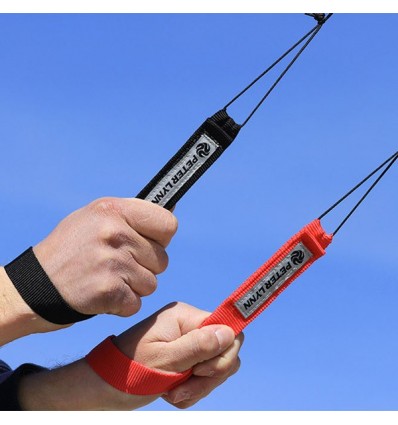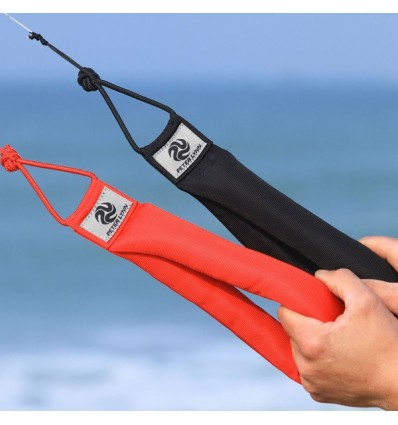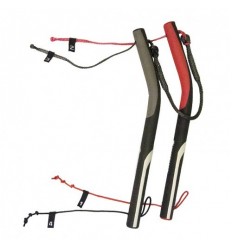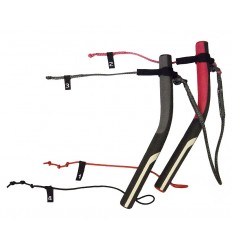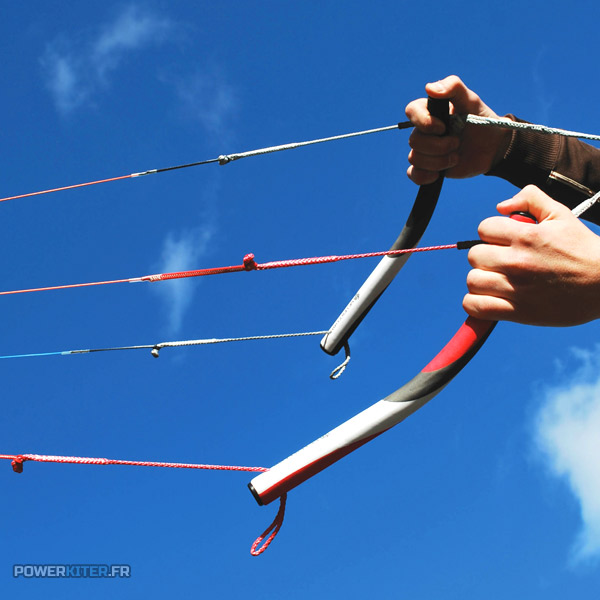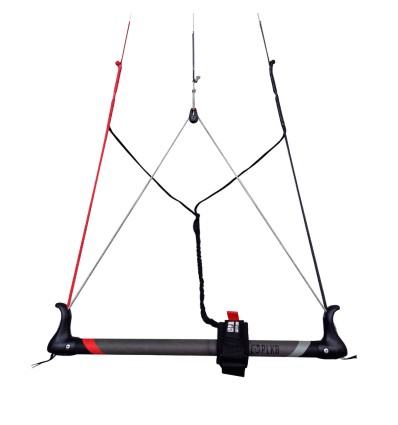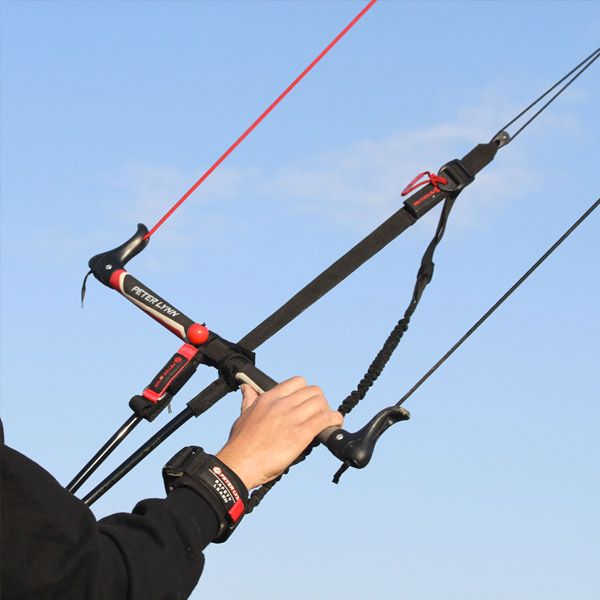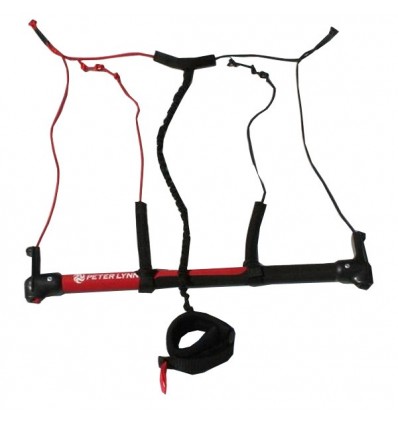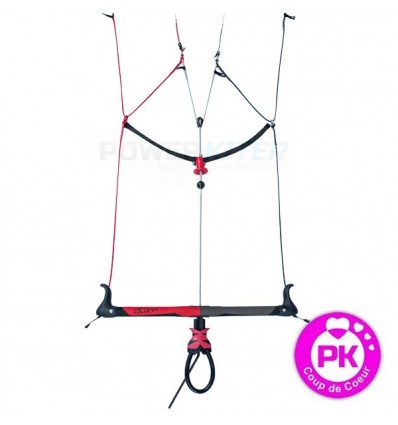No products
Product successfully added to your shopping cart
There are 0 items in your cart. There is 1 item in your cart.
How do I choose my handles or bar from powerkite?
This guide aims to help you choose your handles or bar for your land traction kite. In particular, it details when to use handles rather than a bar with a traction kite, as well as the different types of bar available from powerkite.
Before choosing your handles or bar, it's a good idea to understand the difference between the different types of traction kite.
Bar or handles?
To begin with, there are traction kites that can be used with a bar, with handles or with both. To choose the control equipment that's right for you, you need to know that handles and bar have different advantages:
Handles offer better control and maneuverability. In fact, you only have to hold the handles to realize that you have much more freedom of movement than with a bar. Handling a buggy kite is much "finer", as it allows you to play with precision on the back lines. High-performance buggy wings can only be flown with handles. If you're looking to move into kite-flying, we recommend you start with handles. If you're still undecided about your future at powerkiter, flying with handles will give you more maneuverability and a better understanding of how a kite works.
The bar offers superior comfort. Fitted with a harness, helm piloting can be done with one hand only. The bar is a very good choice if you want to go into mountainboard or snowkiting (or even kitesurf), for which a bar kite is most often used. Border/choquer traction sails, on the other hand, are only available with a bar fitted with a depower system.
3-line traction sails are always offered with a bar, as they are often used for subsequent kitesurf or kite mountainboard practice. We call them "trainer kites".
Handles
Most traction kite handles are similar. All brands offer a standard model that can be used with any kite.
2-line traction kites generally come with "strap" handles by default, which can be padded with foam on larger models.
4-line traction wings for beginners are often offered with handles, but some models can also be used with a bar. Handle size may vary according to sail size. Standard handle sizes range from 33cm to 37cm for wings under 5m². Larger handles are more suitable and offer better control.
Standard handles are ideal for 4-line traction kites like the Ozone Octane, Peter Lynn Hornet or HQ Beamer.
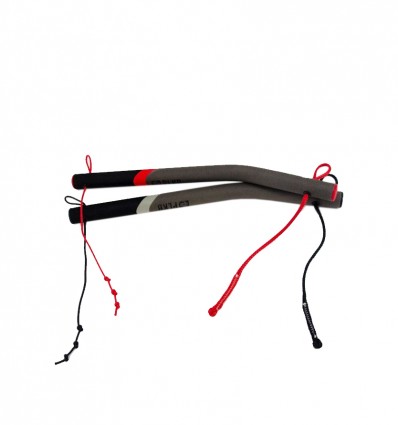
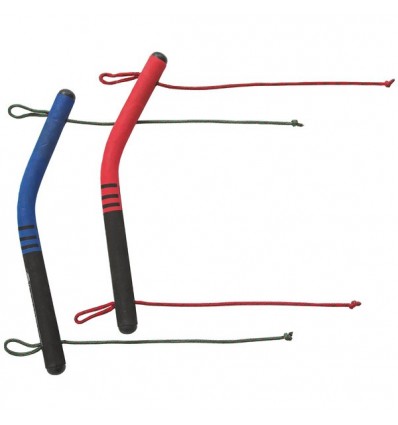
Some handle models are reserved for experienced pilots who want extra comfort. Some of these handles feature improvements such as a pre-attached harness end, or neoprene protection on the pre-lines for better finger protection.
Bars
Bars for 2 and 3-line traction kites
2-line traction kites can be fitted with a bar. These 2-line bars are extremely simple and generally have no adjustments. Most of the time, they are equipped with a leash (kitekiller), connected to one of the two lines, to "kill" the kite's power in case of problems.
3-line traction kites are systematically equipped with a bar fitted with a third line, particularly useful for re-launching the kite in all situations.
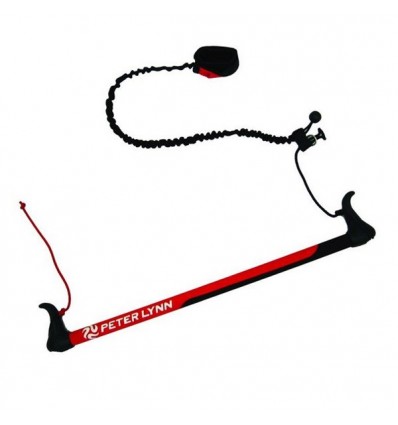
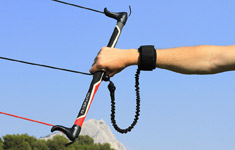
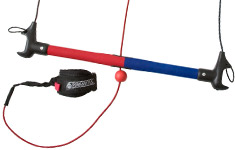
Bars for 4-line traction kites
4-line traction kites equipped with a control bar can benefit from different systems.
Classic control bars, known as "fixed" bars. These powerkite bars have 4 lines connected directly to the bar or via a strap. Unlike bars with a "Border/choquer" system, these bars do not allow you to manage the wing's power. Adjustment possibilities are generally limited to a strap that allows you to adjust the rear. This type of bar is fitted as standard on most wings, such as the Peter Lynn Hornet or the Ozone Octane.
Crossover bars can also be fitted to non depower 4-line traction wings. These bars are unique in that they feature a system that enhances the sail's responsiveness. The front lines are connected to the rear lines by a more or less elaborate process. In this way, the tension given to a front line by pulling on the bar is partly redirected to the back line on the same side, thus improving rotation speed. There are various models that can be adapted to any "fixed" 4-line kite, especially on larger sizes, to improve responsiveness.
Border / Choquer (or Depower) bars
What does "Border / Choquer" mean? It refers to the system used to manage the power of the traction kite via the bar. The word "Border" means "to pull the bar" and the word "Choquer" means "to push the bar". The bars on kites with the depower system therefore make it possible to influence the power generated by the kite.
By pulling the bar towards you (by tucking in), you pull on the back lines, so that the bottom surface of the sail is more exposed to the wind. As a result, more power is available for setting off or jumping, for example.
Pushing on the bar (shocking) releases the tension on the lines and alters the angle of incidence of the wing in relation to the wind. The bottom surface is less exposed to the wind, so the kite develops less power.
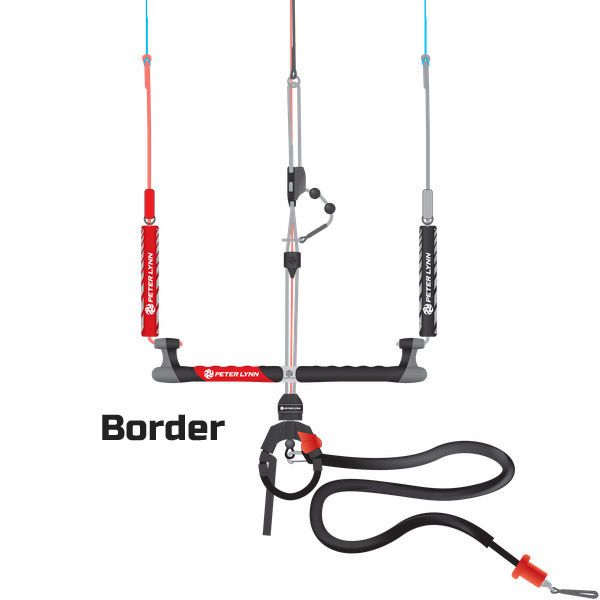
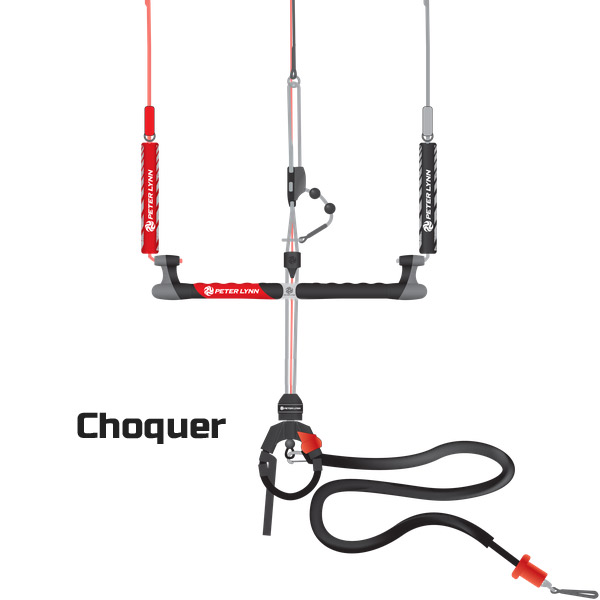
I need more advice on choosing my handles or bar!
> See the Bars and Handles section.
>Back to the Powerkite Buying Guide.

